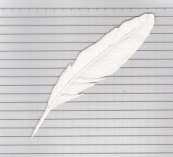Monday August 14, 2006 6:00 am Lethbridge Alberta Sunrise 6:20 Sunset 8:52 Hours of daylight: 14:32
|
|
From rear window |
South patio |
Both images taken at 3:00 PM |
A. Morning Musings
7:30 am It is + 9 C at the moment, with a forecast high of + 28 C.
Today promises to be fairly busy. I am not sure if I will accomplish any Learning activities today. Not all days need be productive.
B. Plan
| Immediate |
|
|
| Health |
Walk & exercise |
1 hr |
| Mathematics |
Read "The Computational Beauty of Nature" Chap
3 |
1 hr |
| Model Trains |
Build oil refinery diorama: add piping to connect oil tanks to refinery and to loading platform |
2 hr |
| Literature |
Begin reading "All the Men Are Sleeping" |
|
| Later |
|
|
| Chores |
Investigate water softeners for home |
1 hr |
| Technology |
Read manual for cell phone |
1 hr |
| |
add keywords to iPhoto records |
|
| |
Make notes for chap. 4 of "Switching to the Mac" |
2 hr |
| |
Begin reading "iPhoto" |
1 hr |
| |
digital photography - learn about using the various manual settings |
|
| Mathematics |
Larson "Calculus" |
|
| |
Gardner "The Colossal Book of Short Puzzles" |
|
| History |
Continue reading "Citizens" |
2 hrs |
| |
Watson "Ideas" |
|
| Model Trains |
Add blue backdrop to layout |
|
| |
Assemble second oil platform kit |
|
| |
Redraw diagram for Lower Mainline control panel |
|
| |
Wire Lower Mainline turnouts |
|
| |
|
|
C. Actual/Notes
2:10 PM I have begun looking at the history book "Citizens" by Simon Schama (1989) which is about the French Revolution. How does one go about Learning about the French Revolution? I have created an Inspiration chart that maps out the major topics and sub-topics as I see them. The important issue in my mind is the process of creating the notes, not the actual notes themselves. Thus in order to create this chart I had to continually ask myself: What is important? and Have I captured most of the important perspectives? Since I claim that the real issue is how I, as a Learner, come to understand the topic, I need a way of seeing how my understanding changes over time. Thus the first chart represents my understanding before I read the book and immerse myself in the topic. I then need a way to document the changes over time.
The first chart is embarrassingly empty. I think I have a fairly good structure for my eventual understanding, but the actual notes are both rare and very brief. I have a few names, one event, and three terms. Hopefully the chart will see extensive elaboration as I read the book. The goal for me, as a Learner, is to read a chapter and then review my chart to see what I can add. A similar chart is likely applicable to any other historical topic.
In addition to creating a conceptual chart, I also want to make a set of notes based on sentences that I feel are important. These notes will contain my questions as well, using my 2-color system, where my reflective questions are embedded in a tan colored box within the overall notes which will be in a light green box.
|
|
|
History Chronology |
Notes for "Citizens" (1989) by Simon Schama.
2:10 PM I have begun looking at the history book "Citizens" by Simon Schama (1989) which is about the French Revolution. How does one go about Learning about the French Revolution? I have created an Inspiration chart that maps out the major topics and sub-topics as I see them. The important issue in my mind is the process of creating the notes, not the actual notes themselves. Thus in order to create this chart I had to continually ask myself: What is important? and Have I captured most of the important perspectives? Since I claim that the real issue is how I, as a Learner, come to understand the topic, I need a way of seeing how my understanding changes over time. Thus the first chart represents my understanding before I read the book and immerse myself in the topic. I then need a way to document the changes over time.
The first chart is embarrassingly empty. I think I have a fairly good structure for my eventual understanding, but the actual notes are both rare and very brief. I have a few names, one event, and three terms. Hopefully the chart will see extensive elaboration as I read the book. The goal for me, as a Learner, is to read a chapter and then review my chart to see what I can add. A similar chart is likely applicable to any other historical topic.
In addition to creating a conceptual chart, I also want to make a set of notes based on sentences that I feel are important. These notes will contain my questions as well, using my 2-color system, where my reflective questions are embedded in a tan colored box within the overall notes which will be in a light green box. |
2:50 PM I have created an Inspiration template for this book and now wish to add a set of notes based on important sentences in the book. |
The first section of the book is titled, "Alterations: The France of Louis XVI".
This appears to be about the precursers to the French Revolution. The section consists of 5 chapters and covers 200 pages. There is clearly a lot of information here and I will need to be judicious in selecting what to include.
I have a vague memory of creating a table of important events based on this section but am unable to locate it at the moment. It may make sense to begin again in any event as the process of creating the table is what is most interesting. |
Preface [p. xiii - xix]
- "I learned to try to see the Revolution not as a march of abstractions and ideologies but as a human event of complicated and often tragic outcomes." [p. xvii]
This perspective rings true to me. I think that the word 'complicated' is critical. People seldom see the big picture when they are embroiled in the events of the time, and they certainly cannot see the implications of their actions for the future, regardless of how much they may be inspired by an image of such a future. |
Prologue: Powers of Recall - Forty Years Later [p. 3 - 17]
- "What follows (I need hardly say) is not science. ... It is an exercise in animated description, a negotiation with a two-hundred year memory without any pretense of a definitive closure. And both the form of its telling and its chosen subject matter represent a deliberate turning away from analytical history towards Events and Persons, both long forbidden, or dismissed as mere froth on the great waves of history." [p. 6]
- "In their own persons, Lafayette and Tallyrand embodied the split personality of the French Revolution. ... the Revolution ... was the product of two irreconcilable interests - the creation of a potent state [Tallyrand] and the creation of a community of free citizens [Lafayette]." [p. 15]
Here are two names that I do not associate with the Revolution: Tallyrand whom I do not recognize, and Lafayette whom I associate as an early explorer in North America. Yet Schama appears to consider them as both important to the Revolution.
This appears to be the central theme of the book: that the Revolution was the result of the influence of these two contradictory passions. At least the author does not reduce this to one passion, although the reality is likely much more than two.
I need a way to show more of the complexity of the interaction of different themes. The (initial) Inspiration chart is nothing more than a hierarchical chart in a hidden guise. The reality should look more like a spider web.
I will wait until I have made my initial notes for chapter 1 before adding items to my Inspiration chart. |
Part One: Alterations - The France of Louis XVI
Chaper One New Men [p. 21 - 49]
- "For France, without any question, the Revolution began in America. ... Lafayette was shivering at Valley Forge ... There ... the twenty-year-old Marquis [Lafayette] had found his surrogate father in the imposing shape of George Washington." [p. 24]
- "... [Lafayette] a generalized preference for liberty over authority, sponteneity over calculation, candor over artifice, friendship over hierarchy, heart over head and nature over culture." [p. 27]
- "For it is at the top, rather than in any imaginary middle of French society, that the cultural roots of the Revolution should be sought." [p. 40]
- Benjamin Franklin was important in endorsing Lafayette as a supporter of the American Revolution for Independence, thus increasing Lafayette's stature in France. [p. 42 - 43]
- Turgot, "the most intelligent of all Louis XVI's ministers" "argued bitterly against active intervention in America, predicting that its costs would be so overwhelming" whereas "the immensely powerful Foreign Minister, Vergennes, "came to the not unreasonable conclusion that it was Britain that was the insatiably aggressive imperial power." [p. 48]
| I now have 4 new names to add to my list of key individuals: Lafayette, Talleyrand, Turgot and Vergennes. One key idea is that of the importance of the American War of Independence on the French psyche with the idea of freedom being something worth fighting for. |
Here is my revised Inspiration chart (Inspiration1).
|
D. Reflection |



